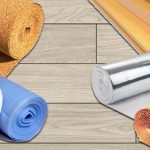Content
-
1 All bricks are divided into two types
- 1.1 Silicate
- 1.2 Ceramic
When starting to build a house of brick, it is important to know that not every brick is suitable for walling. Brick can be of different types, which may have their purpose. To understand which brick to lay walls from, you need to consider the main characteristics of this material.
All bricks are divided into two types
Silicate
It is made from sand with lime in combination with various additives. Pros of such a brick:
- High strength
- Frost resistance;
- Durability;
- Environmental friendliness;
- Price;
- Good sound absorption;
- Possibility of coloring and use for facing.

Silicate brick is afraid of moisture and too high temperatures. Therefore, it is not suitable for foundations, basements, chimneys and fireplaces. But for walls, both load-bearing and facade, it is widely used. It is cheaper than ceramic, but strong enough.
Ceramic
This brick is not afraid of moisture, is able to withstand heating up to 800 ° C. It is produced from clay, by firing with special additives. Its release is more expensive, also because the manufacturing process is long - 5-7 days, and sometimes up to 18 days.
Ceramic bricks are also used to build walls and cladding houses. There are no restrictions regarding the foundations. The coefficient of water absorption is no more than 8%. But it is somewhat worse than silicate in terms of heat and sound insulation.

The brick has many subspecies, dividing by such characteristics as strength, frost resistance and voidness. There are solid, hollow and porous bricks. Solid brick is almost never used for walling. It is more needed for foundations, basement and steps.
Also, brick is divided into facing and building. Typically, the bearing walls of a house are built from a building view. Whereas facing for walls is not used because of the high price and inappropriateness.

Bearing walls from special bricks are also not built:
- Clinker - it is made from special grades of clay according to ancient technology. It is characterized by a homogeneous material structure, water resistance, and frost resistance. It is very expensive, it is used for facing luxury mansions, decorating buildings, walkways and sidewalks.
- Hyperpressed - similar in properties to clinker. It is also durable and not afraid of frost. It is used mainly for facade cladding.
- Stove - this brick is designed for long-term stay at high temperatures - in steel furnaces. Where ordinary brick will crumble, fireclay can resist. Such a brick is actually kiln, quartz and carbon.
- Fireclay - this subspecies of furnace refractory bricks has become widespread for masonry furnaces in the individual sector. There is such a brick in the facing version. Fireplaces and baths can be decorated with it, only a special solution is required.

Thus, facing and special bricks are not suitable for the construction of load-bearing walls, which serve for other purposes and are much more expensive than ordinary ones.
-
 A simple terrace at the cottage for two weekends do it yourself
A simple terrace at the cottage for two weekends do it yourself
-
 Characterization and use of glassizol in modern construction
Characterization and use of glassizol in modern construction
-
 Types of balusters and their features
Types of balusters and their features
-
 Where you can not apply glazing from soft PVC sheets
Where you can not apply glazing from soft PVC sheets
-
 Linkrust: characteristics and technology of gluing
Linkrust: characteristics and technology of gluing
-
 Why acrylic plaster is better than other coatings
Why acrylic plaster is better than other coatings
-
 Liquid wallpaper: advantages, application technology
Liquid wallpaper: advantages, application technology
-
 Facades of a kitchen set made of plastic: advantages and disadvantages
Facades of a kitchen set made of plastic: advantages and disadvantages
-
 What is the optimal thickness of the substrate for the laminate
What is the optimal thickness of the substrate for the laminate
-
 What crushed stone can be hazardous to health?
What crushed stone can be hazardous to health?
-
 What facade for the house will be the warmest
What facade for the house will be the warmest
-
 Properties and methods of using a waterproofing membrane
Properties and methods of using a waterproofing membrane
New publications are published daily on our channel in Yandex. Zen
Go to Yandex. Zen


